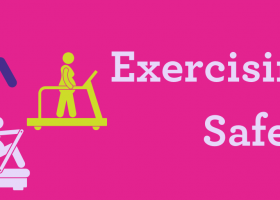Birth Control and STIs

Birth Control Methods
Using birth control can be a very helpful tool to assist in your reproductive plan. It can also be a way to protect you from STIs. You have many different options for birth control. Some methods are more effective than others. Take the time to learn about what is available. Talk with your doctor to find the method that is right for your lifestyle.
Here are just a few examples:
Breastfeeding – LAM (Lactational Amenorrhea Method).
Natural hormones produced in your body while you breastfeed greatly reduce your chances of becoming pregnant up to 6 months after giving birth. You must only be feeding your baby your breast milk with no use of formula.
You should still talk to your doctor about using birth control pills known as “mini-pills” because although breastfeeding does lower the chances of getting pregnant, it isn’t 100% guaranteed. Breastfeeding does not protect you from STIs.
Condoms for males and females.
Condoms are used every time you have sex to reduce your risk of getting an STI or becoming pregnant. There are hundreds of shapes and sizes to choose from, some with lube and without.
Birth control pills.
The pill, also called oral contraceptives, is a pill that you swallow. To be the most effective, it is taken once a day at the same time every day.
Sterilization for females (tubal ligation/tubes tied) and males (vasectomy).
This is a medical procedure to permanently tie your tubes to block sperm and eggs from fertilization.
Diaphragm.
A diaphragm is a removable silicone dome used with spermicide or jelly each time you have sex. It covers your cervix to block sperm. You can be fitted for a diaphragm at your 6-week postpartum doctor’s visit.
IUD.
An IUD is a little, t-shaped piece of plastic that gets put in your uterus to stop sperm from fertilizing an egg. They work for between 5-12 years and can be removed by your doctor when you want to become pregnant.
Birth control implant.
The implant is a small rod, the size of a matchstick. It is inserted under the skin of your arm. It releases a hormone into your body. It reduces your risk of unplanned pregnancy for up to 3 years.
Want to learn more about the pros and cons of each type of birth control and where to get them? Visit Bedsider.
To help you figure out what kind of birth control is best for you, visit Planned Parenthood’s online tool.
Pregnancy Spacing
Whether you want a whole bunch of kids, or you plan on “one and done”, it’s really important to start thinking about your plans ahead of time. That way you can make sure your body has enough time to recover before the next one comes along. When your pregnancies are too close together (less than 18 months) or too far apart (over 5 years) there is a bigger chance that your pregnancy will have complications that put the baby at risk.
For the best outcomes for you and your baby, plan on spacing your pregnancies between 2-5 years apart. This planning will give you a chance to get your body, family, and home ready for a new baby.
Talk to your doctor now about what your birth control options are for after delivery, so that you can be sure your next baby comes on your terms.
STIs & Your Pregnancy
Scary as it sounds, it’s true that sexually transmitted infections (STIs) can be passed to your baby. That’s why it’s really important to get tested for STIs regularly before and during pregnancy. In many cases there is treatment available to protect your baby from getting infected. Testing is the only way to know if you and your baby need treatment. Your doctor will test you for STIs at your first prenatal visit.
- An untreated STI can have serious effects on your growing baby.
- The infection can be passed to your baby while they are in your womb or through the birth canal during the delivery.
- An STI may cause you to go into early labor and infect your uterus after delivery.
- Once you’ve been tested, your doctor can help you to treat the STI to make sure that your baby stays safe.
Resources:
- Go Ask Alice! – It’s an Internet resource for questions and answers about sex, relationships, and reproductive health.
- Planned Parenthood’s online tool – The tool helps you figure out what kind of birth control is best for you.
- Bedsider – The resource explains more about the pros and cons of each type of birth control and where to get them.
Local Resources:
- Planned Parenthood Detroit Health Center in Midtown offers pregnancy and STI testing as well as options for birth control.
- Summit Medical Center provides screenings and testing for pregnancy and STIs as well as reproductive care services.
- Community Health and Social Services (CHASS) Center has locations in Midtown and Southwest which provide bilingual healthcare services.




